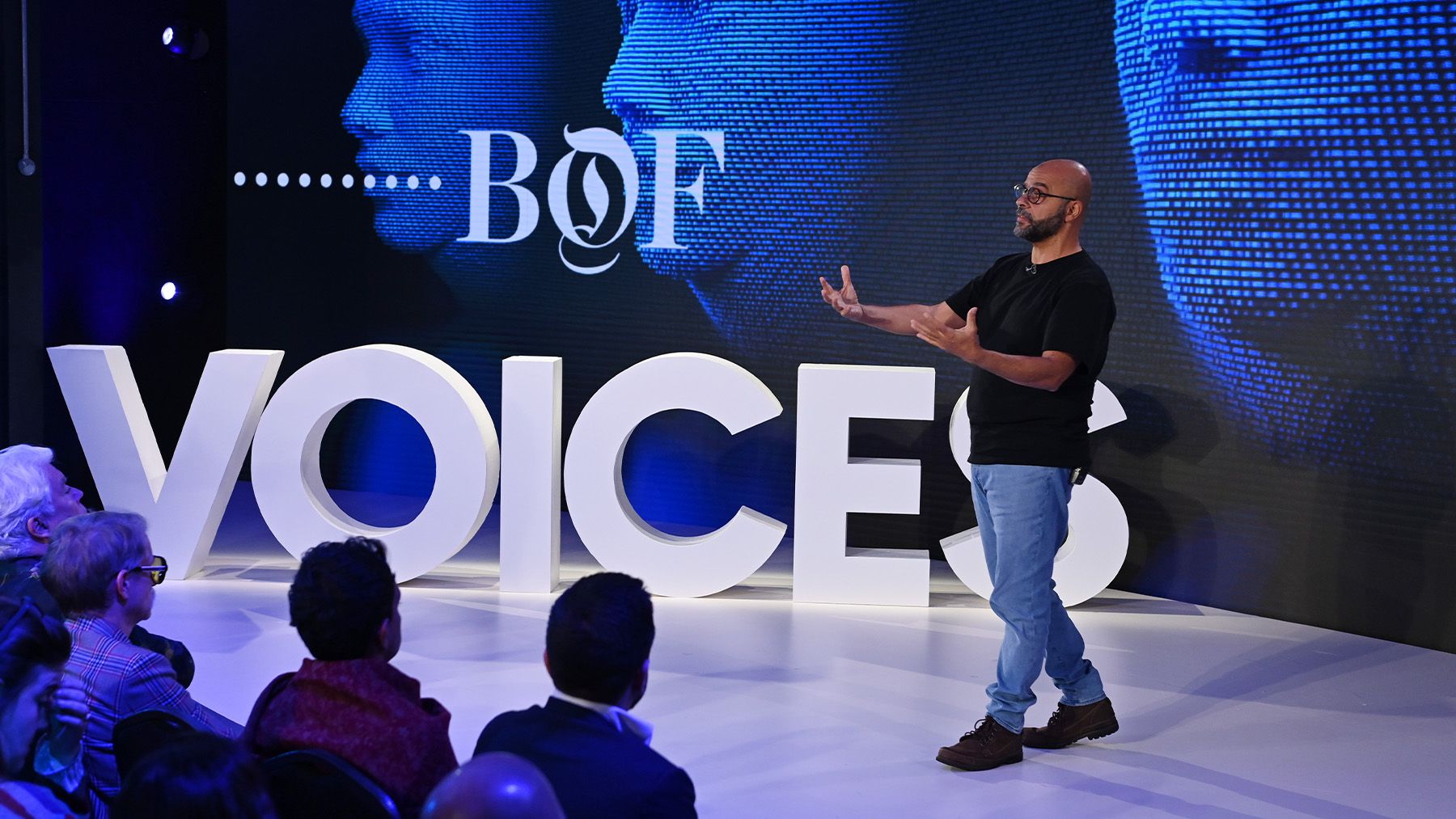
Last week, while I attended this year’s VOICES — BoF’s big annual gathering for thinkers and industry leaders — I had the opportunity to talk to people in different roles across fashion. Being that I’m a technology reporter, many of those conversations naturally turned to innovation.
As I chatted with people at brands, intelligence firms and in fashion education, one technology came up again and again, and it wasn’t virtual reality or the metaverse or NFTs. It was AI.
Artificial intelligence is a decades-old concept, but in recent years the advances in fields like machine learning and computer vision have allowed it to start having a real impact on businesses. Today the most technologically adept fashion brands use it for practical tasks like forecasting demand and setting prices. But as its progress continues to accelerate, the range of possible applications keeps expanding. People within fashion are thinking about where it might go next and what abilities it might soon enable.
At VOICES, part of this interest may have been due to timing. Right now there’s a good deal of excitement in the tech world around text-based AI image generators such as DALL-E, Midjourney and Stable Diffusion. One use case that seemed to draw a lot of interest from VOICES attendees, which I’ve also written about here, is how generative AI could be used in design. A couple of people said they thought it seemed inevitable that AI would eventually play a role on the creative side of fashion. (Nobody went so far as to guess it would replace humans entirely.)
And that wasn’t the only novel application of AI that came up. While guests were still interested in topics like the metaverse and NFTs, it seemed AI more than any other technology was the one they thought would have the biggest impact in the immediate future.
Another person I spoke to, for instance, suggested computer vision could soon allow robots to sew clothes — a feat that’s been attempted by a few companies now without much success because robots have difficulty controlling and manipulating flexible, stretchy fabric. When I pointed this out, the person noted computer vision is improving so quickly that feats are possible today with the technology that weren’t a year ago, and two years from now even more will be possible. (Of course, people have been saying that for years, too.)
The fast advancements happening in AI were the subject of one of the presentations at VOICES this year as well. Mo Gawdat, an author and former chief business officer at Google X, which describes itself as a “moonshot factory” using tech to solve some of the world’s hardest problems, talked about different “inevitables,” including that by the end of this decade the smartest being on Earth won’t be a human. It will be an AI.
There’s still debate over just how “intelligent” artificial intelligence really is. Is it capable of true learning and not just carrying out narrow tasks assigned by humans? In Gawdat’s view, it is. He pointed to the “cat paper,” where in 2012 Google explained how a network of computers it trained on YouTube videos eventually identified what a cat is without any input from humans. Similarly, Gawdat said in 2016 Google had a collection of robot grippers it directed to pick up different objects without instruction on how to do it. One Friday afternoon, a gripper managed to pick up a yellow ball. By Monday, all the grippers were picking up yellow balls. Two weeks later, they could pick up every object available.
Whether or not you believe Gawdat’s view of the future, which foresees a time not so far off when the world is completely reshaped by machine intelligence, you can believe that AI will keep getting better and that we’ll be able to employ it for a greater number of tasks. A robot that uses AI to learn to handle and sew fabric doesn’t seem so farfetched.
Online there’s currently a lot of buzz around ChatGPT, an AI tool created by DALL-E’s developer, OpenAI, that can compose elaborate text responses to user prompts. “ChatGPT is, quite simply, the best artificial intelligence chatbot ever released to the general public,” a New York Times tech columnist recently declared. It has its flaws. It doesn’t appear to understand the meaning behind its responses and can include information that’s just plain wrong. But it’s also not hard to see how such a tool could be used to write, say, marketing copy (to be reviewed by a human, for now at least).
As AI becomes more prevalent, it probably won’t eliminate every job it touches, but it will change them, altering the duties of the humans involved as well as the skillsets required. But then technology is always changing how people work.
The sentiment I sensed most among the VOICES guests I spoke to about AI wasn’t fear or panic. It was something like curiosity. Nobody is quite sure how it will evolve or how it will change the day-to-day workings of fashion in the next two, five or 10 years. But that it will continue advancing seems inevitable, to borrow a word from Gawdat, and fashion will be keeping track.



